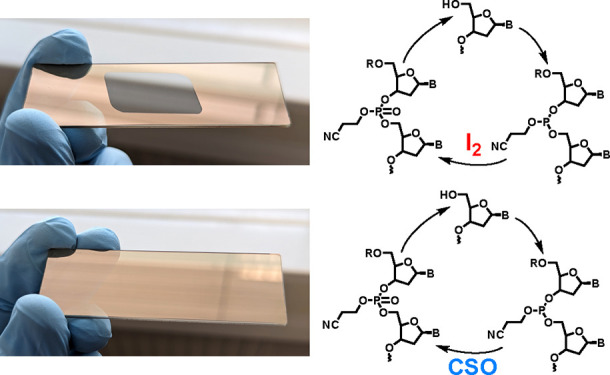- Record: found
- Abstract: found
- Article: found
Nonaqueous Oxidation in DNA Microarray Synthesis Improves the Oligonucleotide Quality and Preserves Surface Integrity on Gold and Indium Tin Oxide Substrates

Read this article at
Abstract

Nucleic acids attached to electrically conductive surfaces are very frequently used platforms for sensing and analyte detection as well as for imaging. Synthesizing DNA on these uncommon substrates and preserving the conductive layer is challenging as this coating tends to be damaged by the repeated use of iodine and water, which is the standard oxidizing medium following phosphoramidite coupling. Here, we thoroughly investigate the use of camphorsulfonyl oxaziridine (CSO), a nonaqueous alternative to I 2/H 2O, for the synthesis of DNA microarrays in situ. We find that CSO performs equally well in producing high hybridization signals on glass microscope slides, and CSO also protects the conductive layer on gold and indium tin oxide (ITO)-coated slides. DNA synthesis on conductive substrates with CSO oxidation yields microarrays of quality approaching that of conventional glass with intact physicochemical properties.
Related collections
Most cited references62
- Record: found
- Abstract: not found
- Article: not found
Oxidative Nucleobase Modifications Leading to Strand Scission.
- Record: found
- Abstract: found
- Article: not found